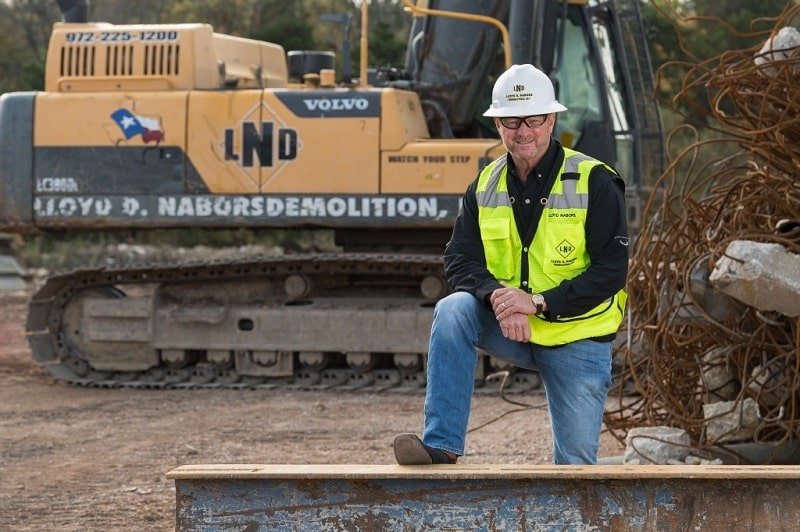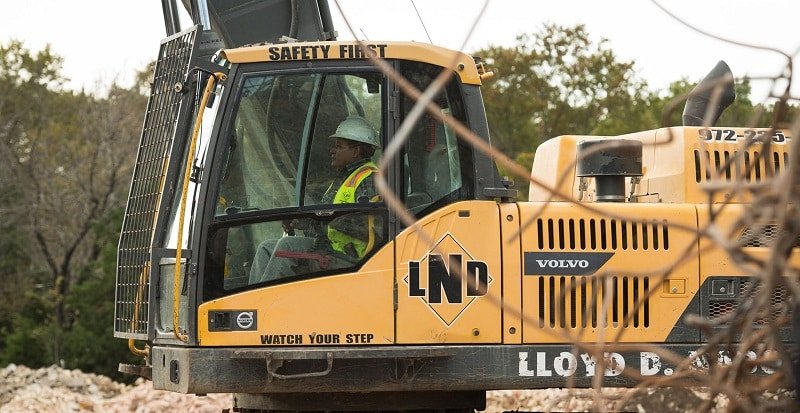It might seem to many mothers that all 10 year old boys try to wreck their houses, but for Texan Lloyd Nabors he really did – starting a lifelong love of demotion, assisted with his loyal gang of Volvo machines.


Many years later, Nabors is the president of Lloyd D. Nabors Demolition, headquartered in Hutchins, Texas, just south of Dallas. Projects have so far taken him across Texas and into neighboring states, including Louisiana, Arkansas and Oklahoma. Nabors is still very hands-on with his machines.
SOME FRIENDLY ADVICE
Nabors says he was committed to the brand of machines he worked on as a boy. He first invested in Volvo construction equipment 12 years ago, after talking with a friend in the excavation business. “He said: ‘You need to try these Volvos, they’re good machines’. He said his savings on fuel were tremendous. So I said, ‘Well, we’ll give it a shot.’ So we bought one.”
Now, he commands a fleet of close to 20 Volvo excavators, including a Volvo EC460 high-reach excavator. Dealer sales representative Jarred Walker of Romco equipment recommended the high-reach machine to meet Nabors’ wide-ranging job requirements. Walker says Nabors was a pioneer.
“He was the first contractor in the state of Texas to buy the high reach,” Walker says. The machine’s flexibility was a strong selling point. With a modular joint system, the extended-reach arm can be exchanged for a digging boom as required. They’ve got it down to about a 45-minute process to do that, with one person,” he continues. “That’s a big deal because the old way would take two days to take the long arm off the machine. The versatility is amazing. The machine has paid for itself many times over. It allows them to go do jobs that they weren’t able to do before.”
OUT OF HARM’S WAY
In addition to the high-reach excavator’s flexibility, Nabors says he appreciates its safety features. “Our long-reach excavator helps us when we have a structure that is six or seven stories tall. It keeps our operator a safe distance away. We’re able to reach up and demolish a building, and we can keep away from the structure when it’s falling,” Nabors says.
Hands-on-demolition-03-2324x1200The high-reach arm can take a shear or a hammer. This helps operators keep the job under control. “We reach up there and cut the columns. We’re able to pull them down and it’s very professional,” Nabors says. “We used to use a wrecking ball, and it wasn’t really controllable. You’d just knock a building down, and wherever it fell, it fell. We’re able to control our demo much better now.”
VP Satterwhite agrees that safety and professionalism are core concerns. “Texas happens to be a state where you don’t need a license to perform demolition. So you might get a few more cowboys who may have a pick-up truck and a sledge hammer and they’re gonna go tear down an apartment complex,” Satterwhite says. “Our job is to make buildings come down, and we want to make sure we’re doing it in a safe manner. We want everybody to leave the same way they came that morning.”

The business of knocking down buildings includes many challenges that outsiders may not consider. Nabors uses drone cameras to help analyze each job site. Satterwhite says, complications take many forms.
“You don’t know how a building may react all the time, especially if it’s old or burnt or wind damaged from tornadoes. We operate with the understanding that anything can happen.”
Satterwhite describes the open site where Nabors recently imploded an old football stadium. “I enjoy seeing a blank piece of ground when we’re all done and it’s clean and there’s grass growing on it. That’s something we take pride in. Now that’s set up for someone to do something great.
We create a place where somebody can build something new,” he concludes.
Tags VolviCE
 Constructionshows
Constructionshows